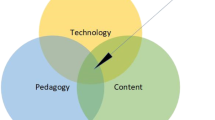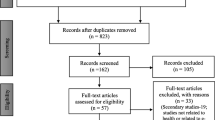Abstract
BACKGROUND: Little is known about the relative advantages of video versus internet-based decision aids to facilitate shared medical decision making. This study compared internet and video patient education modalities for men considering the prostate specific antigen (PSA) test.
METHODS: Two hundred and twenty-six men, aged 50 years or older, and scheduled to complete a physical examination at an HMO Health Appraisal Clinic were randomly assigned to access a website (N=114) or view a 23-minute videotape in the clinic (N=112) prior to deciding whether they wanted to be screened for prostate cancer.
RESULTS: There were no between-groups differences in participants’ ratings of convenience, effort, or satisfaction following exposure to the decision aid. Participants assigned to the video group were more likely to review the materials than individuals assigned to the internet group (98.2% vs 53.5%). Participants in the video group showed significantly greater increases in PSA knowledge and were more likely to decline the PSA test than individuals assigned to the internet group. However, participants in the internet group who reviewed the entire online presentation showed similar increases in PSA knowledge as video participants. Only 5% of all participants visited other websites to inform themselves about the PSA test.
CONCLUSIONS: Overall, the video was significantly more effective than the Internet in educating participants about benefits and risks of PSA screening.
Similar content being viewed by others
References
Frosch DL, Kaplan RM. Shared decision making in clinical medicine: past research and future directions. Am J Prev Med. 1999;17:285–94.
Lenert LA, Cher DJ. Use of meta-analytic results to facilitate shared decision-making. JAMIA. 1999;6:412–9.
O’Connor AM, Rostom A, Fiset V, et al. Decision aids for patients facing health treatment or screening decisions: systematic review. BMJ. 1999;319:731–4.
Lu-Yao G, Albertsen PC, Stanford JL, Stukel TA, Walker-Corkery ES, Barry MJ. Natural experiment examining impact of aggressive screening and treatment on prostate cancer mortality in two fixed cohorts from Seattle area and Connecticut. BMJ. 2002;325:740–5.
Barry MJ. Health decision aids to facilitate shared decision making in office practice. Ann Intern Med. 2002;136:127–35.
Felitti VJ, Anda RF, Nordenberg D, et al. Relationship of childhood abuse and household dysfunction to many of the leading causes of death in adults. The Adverse Childhood Experiences (ACE) Study. Am J Prev Med. 1998;14:245–58.
Frosch DL, Kaplan RM, Felitti VJ. The evaluation of two methods to facilitate shared decision-making for men considering the prostate specific antigen test. J Gen Intern Med. 2001;16:391–8.
Flood AB, Wennberg JE, Nease RF, Fowler FJ, Ding J, Hynes LM. PORT: the importance of patient preference in the decision to screen for prostate cancer. J Gen Intern Med. 1996;11:342–9.
Volk RJ, Cass AR, Spann SJ. A randomized controlled trial of shared decision making for prostate cancer screening. Arch Fam Med. 1999;8:333–40.
Wilkins E, Lowery J, Hamill J. The impact of shared decision making in prostate specific antigen (PSA) screening. Med Decis Making. 1999;19:525.
Diaz JA, Griffith RA, Ng JJ, Reinert SE, Friedmann PD, Moulton AW. Patients’ use of the Internet for medical information. J Gen Intern Med. 2002;17:180–5.
Pautler SE, Tan JK, Dugas GR, et al. Use of the internet for self-education by patients with prostate cancer. Urology. 2001;57:230–3.
Pennbridge J, Moya R, Rodrigues L. Questionnaire survey of California consumers use and rating of sources of health care information including the Internet. WJM. 1999;171:302–6.
Author information
Authors and Affiliations
Corresponding author
Additional information
Gratitude is expressed to Patrick Bogan, James Sallis, Vanessa Malcarne, Thomas Patterson, Theodore Ganiats, Albert Mulley, Michael Barry, Janet Ahlgren, Edi Feldman, Robb Thomas, and the staff of the Kaiser Permanente Health Appraisal Clinic. Supported by a grant from Friends Research Institute and by Cooperative Agreement UC57/CCU920678 from the Centers for Disease Control and Prevention. None of the authors has any conflict of interest.
Rights and permissions
About this article
Cite this article
Frosch, D.L., Kaplan, R.M. & Felitti, V.J. A randomized controlled trial comparing internet and video to facilitate patient education for men considering the prostate specific antigen test. J GEN INTERN MED 18, 781–787 (2003). https://doi.org/10.1046/j.1525-1497.2003.20911.x
Issue Date:
DOI: https://doi.org/10.1046/j.1525-1497.2003.20911.x




